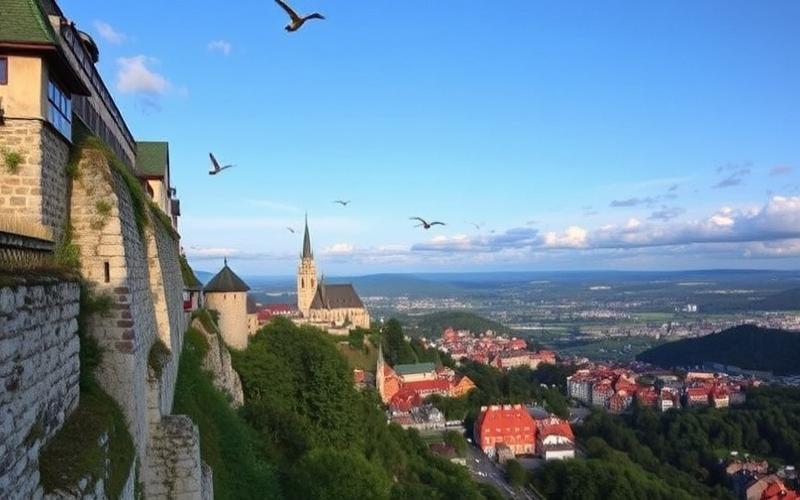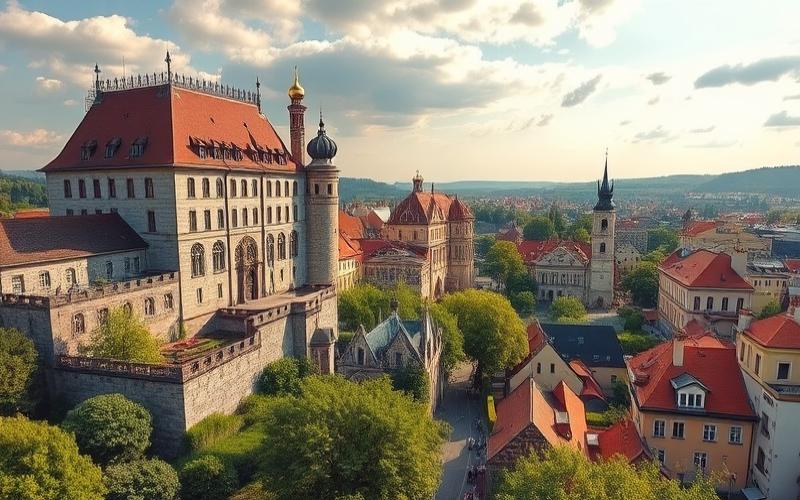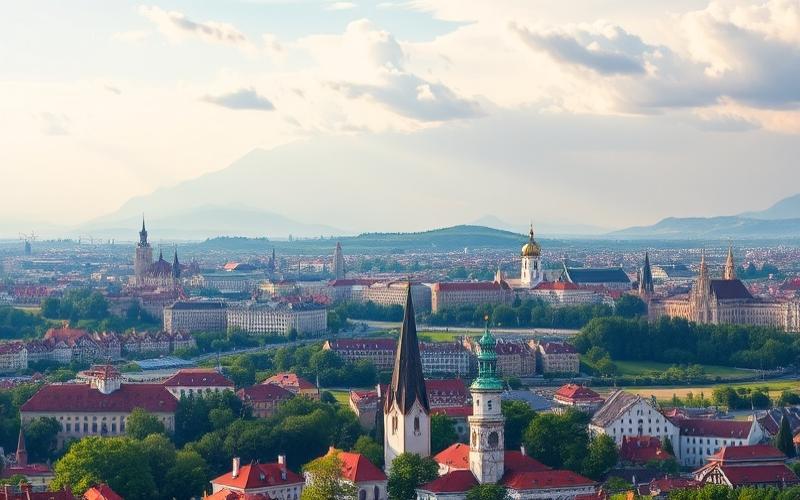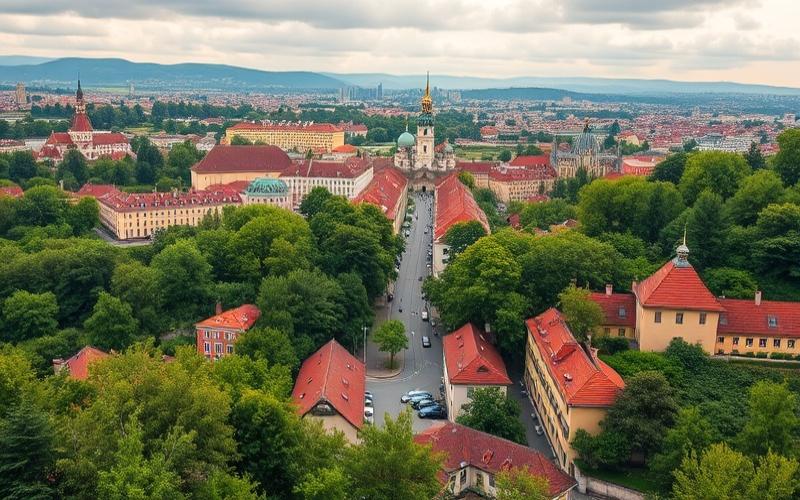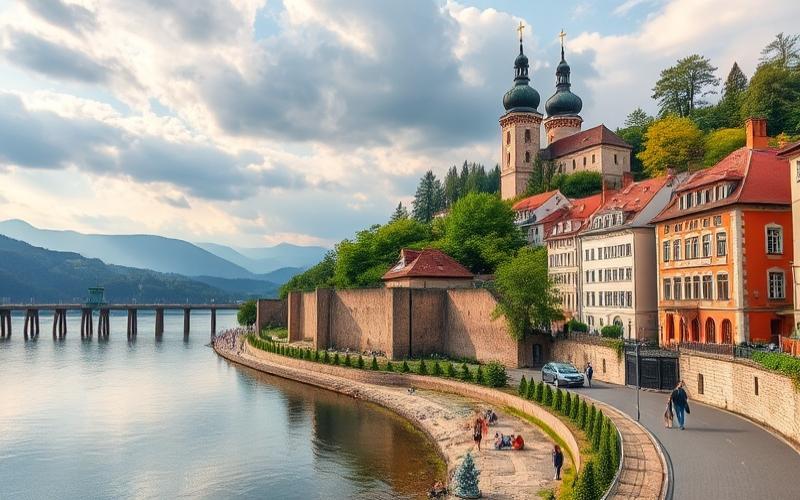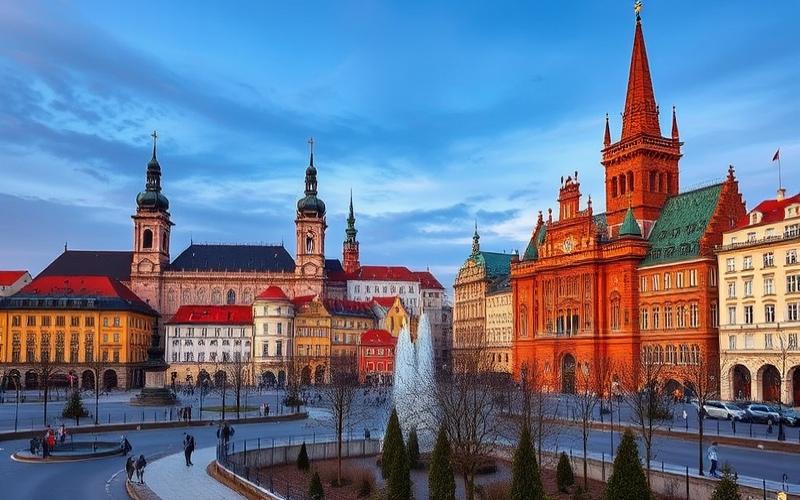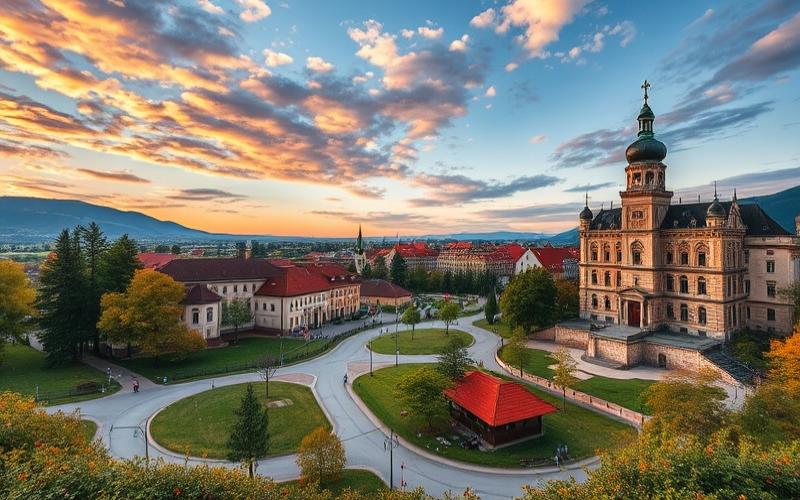
 Published on and written by Cyril Jarnias
Published on and written by Cyril Jarnias
Traveling in Poland offers much more than picturesque landscapes and rich history; it’s also an adventure through an elaborate public transportation network that makes exploring this fascinating country easy.
Whether you’re a first-time visitor or a regular, understanding how to navigate the network of trains, buses, and trams in Poland can transform your stay into a smooth and rewarding experience.
This practical guide details how to effectively use these systems, focusing on the most budget-friendly options, the best apps for planning your trips, and tips for avoiding crowds during peak hours.
Dive into this article to discover how public transportation in Poland can not only simplify your travels but also offer you an authentic glimpse into local life.
Different Modes of Transportation in Poland
Main Modes of Transportation in Poland
- Buses: Available in all cities and villages, they are the most widespread means of transport. Urban and suburban lines provide very broad coverage, with schedules typically from 5 AM to 11 PM. Night buses operate in major metropolitan areas. Integration with other modes (tram, metro) is facilitated by a common ticketing system in most large cities.
- Trams: Operated in major cities such as Warsaw, Krakow, Wrocław, Gdańsk, and Poznań. Fast and regular, they run on dedicated tracks and serve city centers and outlying districts. For example, Warsaw has over 20 lines. Trams are often crowded during peak hours.
- Metro: Exclusive to Warsaw, with two modern lines (north-south and east-west) and an extension planned. Operation from 5 AM to 1 AM (3 AM on weekends). The metro is known for its speed and punctuality.
- Trains: Essential for intercity travel. The railway network connects all major cities and most medium-sized towns. Three main types: IC (InterCity), EIC (Express InterCity), EIP (Express InterCity Premium, Pendolino). Regional trains (POLREGIO, TLK) provide local and regional service.
- Trolleybuses: Present in Gdynia, Lublin, and Tychy, they complement the urban transport offering on specific routes.
- Bike Routes: Rapidly expanding, bike lanes and routes are increasingly integrated into the urban network, especially in Krakow, Gdańsk, and Wrocław. They promote soft mobility and intermodality (bike parking near tram and metro stations).
- Carpooling: Very popular in large cities, it is facilitated by mobile apps and dedicated platforms, particularly for daily or intercity trips.
Network Operation and Integration
- Most large cities offer a unified ticketing system for buses, trams, and metro, simplifying transfers.
- Schedules, network maps, and real-time information are available on mobile apps (Jakdojade, Mobilet, SkyCash).
- Tickets are generally valid for all urban transport modes, with time-based options (20 min, 60 min, 24h, 72h) or single-use tickets.
- Inspections are frequent; ticket validation is mandatory upon boarding.
Popularity and Accessibility
- Buses and trams are the most used means in urban areas for their frequency and affordability.
- The Warsaw metro is appreciated for its speed and comfort.
- Trains are preferred for intercity travel, especially Pendolino (EIP) on major routes.
- Bike routes are gaining popularity among city dwellers, as is carpooling, which helps reduce traffic and pollution.
Modernization and Infrastructure Improvements
- Deployment of electric buses and modern trams in several cities.
- Extension of the Warsaw metro and renovation of railway stations.
- Improved accessibility for people with reduced mobility (elevators, ramps, adapted vehicles).
- Investments in real-time information systems and mobile apps for trip planning.
Practical Tips for Travelers
Ticket Purchase
- Vending machines on board buses, trams, and in stations (contactless payment or cash).
- Newspaper kiosks, grocery stores, dedicated ticket counters.
- Mobile apps (Jakdojade, Mobilet, SkyCash) for purchase and electronic validation.
Trip Planning
- Use mobile apps to check schedules and optimize transfers.
- Opt for time-based tickets for tourist visits and multiple daily trips.
- Always validate your ticket upon entering the vehicle or metro.
Intermodality
- Take advantage of bike parking to combine cycling and public transport.
- Consult network maps to identify transfers between buses, trams, metro, and trains.
| Mode of Transport | Geographic Coverage | Network Integration | Accessibility | Popularity | Modernization |
|---|---|---|---|---|---|
| Bus | National and local | High | Good | Very high | Electrification |
| Tram | Major cities | High | Good | High | Renovation |
| Metro | Warsaw only | High | Excellent | Very high in Warsaw | Extension planned |
| Train | National, cities and regions | Medium | Good | High for intercity | Station modernization |
| Bike Routes | Major cities and tourist areas | Medium | Very good | Growing | Expansion |
| Carpooling | Urban and intercity | Low | Variable | High in cities | Digitalization |
Tip: To avoid lines and save time, prioritize purchasing tickets via mobile apps and inquire about combined tickets for multiple days or groups.
Good to Know:
In Warsaw, the Jakdojade app makes trip planning easier by combining buses, trams, and metros; remember to validate your ticket immediately after purchase to avoid fines. In urban areas, bike routes are highly developed, offering a practical alternative to public transport, which is often crowded during peak hours.
Secrets to an Optimized Transportation Budget
To make the most of public transportation in Poland, there is a wide range of passes, subscriptions, and discounts tailored to each user profile. Smart planning and the use of digital tools allow you to optimize your expenses while maximizing the flexibility of your travels.
| Type of Ticket/Subscription | Duration / Validity | Standard Fare (PLN)* | Discounts | Covered Zones |
|---|---|---|---|---|
| Single ticket | 20-90 min or 1 trip | 4-7 | -50% students/seniors | Urban zone (bus, tram, metro) |
| 24-hour ticket | 24h | 15 | -50% students/seniors | Extended urban zone |
| Weekly pass | 7 days | ~38 | -50% students/seniors | Urban zone |
| Monthly pass | 30 days | ~110 | -50% students/seniors | Urban / suburban zone |
| Semester/Annual pass | 6-12 months | variable | -50% students/seniors | Urban / suburban zone |
| Regional train ticket | Depending on route | variable | -35% seniors, -51% students | All of Poland (PKP, Intercity) |
*Indicative prices, subject to variation by city.
Discounts for Specific Categories
- Students: Reduced fare up to age 26 (student ID required, ISIC card accepted), valid on most urban networks and on regional and Intercity trains (up to -51%).
- Seniors: From age 60, 35% discount on PKP Intercity trains, up to 50% on some regional trains. From age 70, free travel on municipal buses and trams in most large cities upon presentation of proof of age.
- Children: Generally free up to age 4, reduced fares up to age 16.
Public transportation in Poland is varied, efficient, and often economical, especially in large cities. Here is a practical guide to using it well, with concrete advice for buying your tickets, finding your way, traveling safely, and making the most of your stay.
Types of Public Transportation and Their Specifics
| Type of Transport | Availability | Main Characteristics |
|---|---|---|
| Bus | All cities | Very widespread, serve both the center and outskirts. Three categories: ordinary (all stops), semi-rapid (fewer stops), rapid (major lines). Private buses complement the public offering. |
| Tram | Major cities | Dense networks in Warsaw, Krakow, Wrocław, Gdańsk. Ideal for frequent urban trips. |
| Metro | Warsaw only | North-south and east-west lines; fast and reliable for crossing the capital. |
| Regional Train | Everywhere | Omnibus (all stops), regional trains (Polregio), SKM (rapid urban trains in Warsaw and Tri-City). |
| Intercity Train | Between major cities | InterCity (main connections), Express InterCity Premium (“Pendolino”): modern comfort, free Wi-Fi. |
- Trains are often cheaper than buses for long distances.
- To connect two major cities quickly, choose Pendolino or InterCity.
- In some metropolitan areas like Tri-City (Gdańsk-Sopot-Gdynia) or around Warsaw, rapid urban trains like SKM function like a commuter rail system.
Ticket Purchase: Practical Tips
- Sales Points: Counters at bus/railway stations; vending machines; directly from the driver or inspector in some cases.
- Mobile Apps: Use apps like Jakdojade or e-podroznik.pl to compare schedules/prices/travel times between bus and train.
- Average Prices:
- Single urban ticket: about 4 PLN (~€1).
- Daily/weekly/monthly passes available in all major cities.
- Intercity Warsaw-Gdańsk round trip: ~170 PLN (~€40).
- Intercity Warsaw-Krakow round trip: ~180 PLN (~€42).
- Purchases possible online via the official PKP website or via Wanderu.
Good to Know:
Always validate your ticket immediately upon boarding the bus/tram/metro! Validation is mandatory to avoid fines.
In a Polish bus or railway station:
- godz = schedule
- stanowisko / peron = platform
- kierunek = destination
- odjazdy = departures
- przyjazdy = arrivals
- nie kursuje = not running that day
Electronic signs clearly display this information – learn these keywords to avoid any confusion.
To plan your trips:
- Use Google Maps or Citymapper adapted to local networks.
- Central stations are often close to the historic center; they are a strategic point for exploring the city on foot afterward.
Practical Tips
Avoiding Crowds
Peak hours are generally between 7–9:30 AM and 3–6:30 PM Monday through Friday – avoid them if possible if you want to travel more comfortably.
Tourist Alternatives
Good to Know:
In Poland, familiarize yourself with buses, trams, metros, and regional trains, where purchasing tickets via mobile apps is convenient; validating the ticket is essential to avoid fines, especially during peak hours. For more comfort, avoid peak hours, use information boards in Warsaw, Krakow, or Wrocław, and watch your personal belongings to ensure your safety.
Disclaimer: The information provided on this website is for informational purposes only and does not constitute financial, legal, or professional advice. We encourage you to consult qualified experts before making any investment, real estate, or expatriation decisions. Although we strive to maintain up-to-date and accurate information, we do not guarantee the completeness, accuracy, or timeliness of the proposed content. As investment and expatriation involve risks, we disclaim any liability for potential losses or damages arising from the use of this site. Your use of this site confirms your acceptance of these terms and your understanding of the associated risks.

